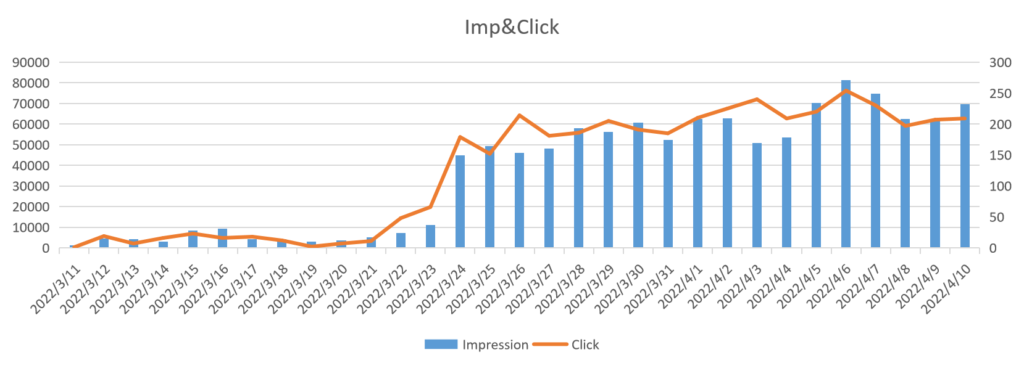In today’s digital era, the Chinese market presents a vast opportunity for overseas brands to expand their reach and influence. To capitalize on this potential, a meticulous approach to digital marketing is crucial. This article Deep Digital China delves into the steps that overseas brands must undertake to successfully track and optimize their digital marketing activities in China.

Defining Digital Marketing Objectives and KPIs
The foundation of any successful marketing campaign lies in setting clear objectives. For overseas brands targeting the Chinese market, these might include enhancing brand awareness, boosting website traffic, increasing conversion rates, and fostering social media engagement. Accompanying these objectives are Key Performance Indicators (KPIs) that serve as benchmarks for measuring success. Examples include impression count, Click-Through Rate (CTR), Conversion Rate (CVR), social media followers, and engagement metrics like likes, comments, and shares.

Selecting Tracking Tools and Platforms
To effectively monitor these KPIs, brands must leverage a diverse set of tools and platforms. Google Analytics and Baidu Analytics are invaluable for website traffic and conversion tracking. For social media, platforms like Weibo Data Center, WeChat Index, and Douyin Data Platform offer insights into content performance and audience engagement. Advertising platforms such as Baidu Marketing, Tencent Advertising, and Douyin Ads provide direct access to ad performance data. CRM systems, meanwhile, track customer behavior and purchase conversions, offering a holistic view of the customer journey.
Data Collection and Integration
Data collection is a multi-channel endeavor, ensuring no touchpoint is overlooked. From websites to social media and advertising platforms, every interaction counts. Once gathered, this data could be integrated into a unified platform or tool for comprehensive analysis and comparison. This consolidation process simplifies decision-making by providing a single source of truth.
Data Analysis and Evaluation
The next phase involves comparing actual performance against predefined KPIs. This evaluation uncovers strengths and weaknesses, guiding future optimizations. Trend analysis sheds light on how data evolves over time, identifying patterns and potential causes for fluctuations. Audience analysis delves into consumer demographics, preferences, and behaviors, informing targeted marketing strategies. Attribution modeling, whether last-click or multi-touch, clarifies the contribution of each channel to conversions.
Digital Marketing ROI Calculation
Calculating Return on Investment (ROI) is essential for assessing the financial viability of marketing campaigns. By comparing marketing expenses to revenue generated, brands can determine the economic efficiency of their efforts. Cost-benefit analysis further refines this understanding, revealing which campaigns offer the best bang for the buck.

Optimization and Iteration
Armed with data insights, brands must adapt their strategies. Feedback from users, ROI calculations, and performance analysis inform these adjustments. Continuous testing of new channels, content, and tactics ensures ongoing improvement. Product and service iterations, driven by market trends and consumer needs, maintain brand competitiveness.
Establishing a Digital Marketing Feedback Loop
Regular assessments, such as monthly, quarterly, or annual reviews, ensure campaigns remain on track. Collaboration between marketing, sales, and product teams fosters a cohesive approach, where each department’s insights inform the others’ actions.
Practical Application and Success Story: Starbucks in China
Strategy Planning and Execution
Starbucks’ digital marketing success in China is rooted in clear strategy planning and execution. They set specific goals for each campaign, such as enhancing brand awareness and increasing social media engagement. Corresponding key performance indicators (KPIs) include exposure, engagement rate, and conversion rate. These KPIs guide marketing activities and facilitate evaluation and optimization.
To meet these goals, Starbucks uses various tracking tools and platforms. Google Analytics and Baidu Analytics help monitor website traffic and conversion rates. Social media analytics tools like Weibo Data Center and WeChat Index provide insights into user engagement. Advertising platforms like Baidu Marketing, Tencent Advertising, and Douyin Ads track ad performance and allow for optimization.
For example, Starbucks posts content related to coffee culture on WeChat and Weibo, using social media analytics to track exposure and engagement. Data analysis shows that content like new products and activities are popular, leading Starbucks to increase such posts to boost brand awareness and user participation.

Data-Driven Optimization
Starbucks emphasizes data collection, integration, and analysis in marketing. Data from websites, social media, and advertising platforms is integrated into a unified analytics tool for comprehensive analysis.
Deep data analysis helps Starbucks identify strengths and weaknesses in marketing activities, enabling targeted optimization. Trend analysis,For instance, trend analysis reveals that social media engagement significantly increases during specific timeframes (e.g., Saturday afternoons). Based on this finding, Starbucks adjusts its content publishing strategy, increasing content updates and interactive content types during these peak hours.
Starbucks also uses attribution analysis models to evaluate the contribution of different marketing channels to conversions. This helps in efficient budget allocation. For search advertising campaigns, Starbucks tracks click-through and conversion rates on Baidu and Google, optimizing keyword bids based on performance data.
Continuous Iteration and Feedback Loop
Starbucks adopts an iterative approach to digital marketing. Based on data analysis, user feedback, and ROI calculations, marketing strategies and campaign plans are continually adjusted for better effectiveness.
Robust feedback mechanisms are established, with regular evaluations of campaign performance and user feedback to identify issues and take corrective actions. This continuous improvement maintains market competitiveness and enhances user experience.
FAQs on China Digital Marketing Performance Optimization
1. I haven’t used Baidu Analytics in a while, and the amount of data is overwhelming. Which metrics should I focus on?
If you’ve been overwhelmed by the abundance of data in Baidu Analytics, rest assured, it’s a common challenge. Focus your attention on metrics that align with your digital marketing goals. Here’s a concise roadmap:
Marketing Awareness: Keep tabs on website visitors, social media follower growth, and post engagement to gauge your brand’s reach.
Lead Generation: Monitor form submissions, landing page conversions, and email sign-ups to track your lead-generation efforts.
Sales Performance: Analyze conversion rates for product purchases, cart abandonment rates, and online revenue to evaluate sales success.
Once your objectives are clear, prioritize relevant metrics and delve deeper into the data to uncover valuable insights.

2. My social media activity is high, but my website traffic isn’t growing. What could be the problem?
While active social media engagement is commendable, it doesn’t always translate directly into website traffic. Consider these factors:
Absence of CTAs: Ensure your social media posts include clear calls to action (CTAs) that encourage visitors to explore your website, learn about special offers, or proceed to the next step.
Content Disparity: Does your social media content seamlessly integrate with your website’s offerings? Ensure a smooth transition from social media intrigue to website value.
Landing Page Alignment: Evaluate which social media channels drive traffic to your site and ensure landing pages align with the messaging and content on those platforms.
Addressing these issues and incorporating compelling CTAs can transform social media engagement into meaningful website traffic.

3. How often should I track and analyze my digital marketing performance?
The frequency of monitoring your digital marketing performance varies based on the pace of your business and your strategic goals. Here’s a guide:
Real-Time Monitoring: For campaigns with short lifespans or high-stakes events, real-time monitoring can help you quickly adjust strategies based on immediate feedback.
Weekly Reviews: For ongoing efforts, a weekly review can provide a snapshot of your progress and identify trends that may require attention.
Monthly Deep Dives: Monthly analysis offers a more comprehensive look at your performance, allowing you to analyze trends, calculate ROI, and plan for the coming months.

In conclusion, by adhering to the outlined framework—from defining objectives and selecting tracking tools to analyzing data and optimizing strategies—overseas brands can effectively navigate the complex digital landscape of China, achieving lasting success in their marketing endeavors.
